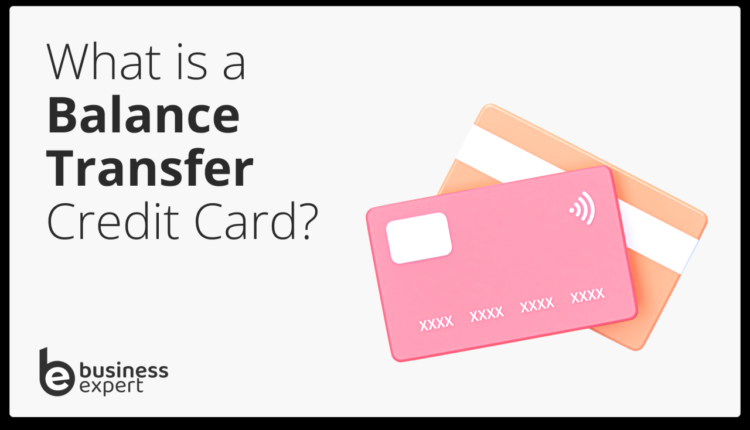
- What are Business Balance Transfer Credit Cards?
- Benefits of Business Balance Transfer Credit Cards
- Factors to Consider When Choosing a Business Balance Transfer Credit Card
- How to Use a Business Balance Transfer Credit Card Effectively
- Risks Associated with Business Balance Transfer Credit Cards
- Alternatives to Business Balance Transfer Credit Cards
- Ending Remarks: Business Balance Transfer Credit Cards
- FAQ Explained
Business balance transfer credit cards offer a unique opportunity for entrepreneurs and business owners to manage their debt effectively and potentially save money on interest charges. These cards are designed specifically for business expenses, allowing you to consolidate existing debt from other credit cards or loans into a single, manageable account. This strategy can streamline your finances, improve cash flow, and potentially lower your overall interest burden.
Unlike personal balance transfer cards, business balance transfer cards often come with higher credit limits and more flexible repayment terms, making them a valuable tool for businesses with significant financial needs. However, it’s crucial to understand the terms and conditions of these cards, including introductory interest rates, transfer fees, and potential penalties for late payments, to ensure they align with your business goals.
What are Business Balance Transfer Credit Cards?

Business balance transfer credit cards are a type of credit card designed to help businesses consolidate high-interest debt from other credit cards, loans, or lines of credit. They offer a promotional period with a 0% APR, allowing businesses to save on interest charges while paying down their existing debt.
These cards are particularly beneficial for businesses that find themselves burdened with high-interest debt and are looking for a way to manage their cash flow more effectively.
Target Audience for Business Balance Transfer Credit Cards
Business balance transfer credit cards are specifically designed for businesses, not individuals. The target audience for these cards includes:
- Small and medium-sized enterprises (SMEs): These businesses often rely heavily on credit to fund operations and growth, and they can benefit from the lower interest rates offered by balance transfer cards.
- Startups: Startups often face high initial costs and may struggle to manage their finances. A balance transfer card can provide them with much-needed financial flexibility.
- Businesses with seasonal fluctuations: Businesses with seasonal fluctuations in revenue may experience periods of high debt accumulation. A balance transfer card can help them manage their cash flow during these periods.
- Businesses with existing high-interest debt: Any business with high-interest debt can benefit from a balance transfer card. The lower interest rates can help them save money on interest charges and accelerate their debt repayment.
Differences Between Business and Personal Balance Transfer Cards
While both business and personal balance transfer cards share some similarities, there are key differences:
- Eligibility Requirements: Business balance transfer cards often have stricter eligibility requirements than personal cards. They typically require a strong business credit score and a demonstrated history of financial stability.
- Credit Limits: Business balance transfer cards generally offer higher credit limits than personal cards, reflecting the larger financial needs of businesses.
- Rewards Programs: Business balance transfer cards may offer rewards programs specifically designed for business expenses, such as cash back on travel or office supplies.
- Fees: Business balance transfer cards may have higher annual fees than personal cards, but they often come with lower transfer fees.
Benefits of Business Balance Transfer Credit Cards
Business balance transfer credit cards offer several advantages for businesses looking to manage their debt and improve their financial health. These cards can help businesses save money on interest charges, streamline debt management, and improve cash flow.
Interest Rate Savings
Transferring high-interest debt to a balance transfer credit card with a lower interest rate can significantly reduce interest payments. This allows businesses to save money and allocate more funds towards growth and expansion.
For example, a business with $50,000 in debt at 18% interest could save thousands of dollars in interest payments by transferring the balance to a card with a 0% introductory APR for 18 months.
Debt Consolidation
Business balance transfer credit cards can help businesses consolidate multiple high-interest debts into a single, manageable account. This simplifies debt management and makes it easier to track payments and avoid late fees.
By consolidating debt, businesses can gain a clearer picture of their overall financial obligations and create a more efficient debt repayment strategy.
Improved Cash Flow
By reducing interest payments and consolidating debt, business balance transfer credit cards can free up cash flow for other business needs, such as inventory purchases, marketing campaigns, or employee salaries.
A business with improved cash flow can operate more efficiently, take advantage of growth opportunities, and weather economic fluctuations more effectively.
Dedicated Line of Credit for Business Expenses
Business balance transfer credit cards provide a dedicated line of credit specifically for business expenses. This allows businesses to separate their personal and business finances and avoid potential conflicts of interest.
A dedicated line of credit for business expenses also makes it easier to track business spending and ensure compliance with tax regulations.
Factors to Consider When Choosing a Business Balance Transfer Credit Card
Choosing the right business balance transfer credit card can be a smart move for your business, but it’s essential to consider various factors before making a decision. By carefully evaluating the terms and conditions of different cards, you can find one that aligns with your business needs and helps you save money.
Interest Rates
Interest rates are a critical factor when choosing a business balance transfer credit card. A lower interest rate will help you save money on interest charges over time. Compare the interest rates offered by different cards, paying attention to both the introductory APR and the standard APR. The introductory APR is the interest rate you’ll receive for a specific period, typically 12 to 18 months, after which the standard APR kicks in. Consider the following points:
- Introductory APR: Look for cards with the lowest introductory APR, as this can save you significant money on interest charges during the promotional period.
- Standard APR: While the introductory APR is attractive, ensure you understand the standard APR that applies after the introductory period ends. Choose a card with a competitive standard APR to avoid high interest charges in the long run.
- Variable vs. Fixed APR: Variable APRs fluctuate with market interest rates, while fixed APRs remain constant throughout the loan term. Consider your risk tolerance and the potential impact of interest rate changes when choosing between variable and fixed APRs.
Transfer Fees
Balance transfer fees are charged when you move your debt from another credit card to a new one. These fees can vary significantly between cards, so it’s essential to compare them carefully. Here are some things to keep in mind:
- Percentage-Based Fees: Some cards charge a percentage of the balance you transfer, typically ranging from 1% to 3%.
- Flat Fees: Other cards charge a flat fee, which can range from $25 to $100.
- Combination of Fees: Some cards may charge a combination of percentage-based and flat fees.
Introductory Periods
The introductory period is the time during which you’ll receive the introductory APR. A longer introductory period gives you more time to pay down your balance and save on interest charges. Consider the following:
- Length of Introductory Period: Cards typically offer introductory periods ranging from 12 to 18 months. Choose a card with a longer introductory period to maximize your savings.
- Balance Transfer Deadline: Pay attention to the deadline for transferring your balance to the new card. Ensure you have enough time to complete the transfer before the introductory period expires.
Credit Limit
The credit limit is the maximum amount you can charge to your credit card. A higher credit limit provides more flexibility, but it’s essential to use it responsibly and avoid overspending. Consider the following:
- Adequate Credit Limit: Ensure the credit limit is sufficient to cover your balance transfer and any future purchases.
- Credit Limit Approval: Check the credit limit offered by the card issuer and ensure it meets your business needs.
Eligibility Requirements
Before applying for a business balance transfer credit card, it’s essential to understand the eligibility requirements. These requirements can vary depending on the card issuer and may include factors such as your credit score, business revenue, and time in business. Consider the following:
- Credit Score: Card issuers typically require a good credit score for approval. Check your credit score before applying to ensure you meet the minimum requirements.
- Business Revenue: Some card issuers may have minimum revenue requirements for business credit cards.
- Time in Business: You may need to have been in business for a specific period to qualify for a business balance transfer credit card.
Additional Perks and Features
Some business balance transfer credit cards offer additional perks and features that can be valuable to your business. These perks can include:
- Rewards Programs: Some cards offer rewards programs that allow you to earn points or miles for your business spending.
- Travel Benefits: Certain cards may offer travel benefits such as airport lounge access or travel insurance.
- Purchase Protection: Some cards offer purchase protection that covers your purchases against damage or theft.
- Extended Warranty: Certain cards may extend the manufacturer’s warranty on your purchases.
How to Use a Business Balance Transfer Credit Card Effectively

A business balance transfer credit card can be a powerful tool for managing your business debt, but only if you use it strategically. You need to carefully consider the transfer process and how you’ll manage the card to maximize its benefits and avoid potential pitfalls.
Transferring Existing Business Debt
The process of transferring existing business debt to a new card involves several steps. First, you need to choose a card that offers a 0% introductory APR for balance transfers and has a low balance transfer fee. Next, you’ll need to apply for the card and get approved. Once approved, you can initiate the balance transfer process by providing the card issuer with the account information for the debt you want to transfer.
- Choose a Business Balance Transfer Credit Card: Carefully compare the offers from different card issuers to find one that aligns with your business needs. Consider factors like the introductory APR, balance transfer fee, annual fee, credit limit, and rewards program.
- Apply for the Card: Once you’ve chosen a card, apply for it and ensure you meet the eligibility requirements.
- Initiate the Balance Transfer: Once approved, contact the new card issuer and provide them with the account information for the debt you want to transfer. This typically involves providing the account number, creditor name, and the amount you wish to transfer.
- Confirm the Transfer: Monitor the transfer process and confirm that the debt has been successfully transferred to your new card.
Managing the Transfer Process
It’s crucial to manage the balance transfer process carefully to avoid incurring additional fees or interest charges.
- Pay Attention to Deadlines: Ensure you complete the balance transfer within the introductory APR period. Failing to do so could result in a higher interest rate being applied to the transferred balance.
- Minimize Transfer Fees: Compare balance transfer fees across different card issuers and choose a card with a low fee or no fee at all.
- Avoid New Purchases: During the introductory period, focus solely on paying down the transferred balance. Making new purchases on the card could negate the benefits of the 0% APR.
Strategies for Paying Down Debt Quickly
To maximize the benefits of a business balance transfer card, you need to develop a strategy for paying down the debt quickly and efficiently.
- Create a Budget: Develop a detailed budget that Artikels your business’s income and expenses. This will help you determine how much you can allocate towards debt repayment each month.
- Set a Repayment Goal: Establish a clear and achievable goal for paying off the transferred balance. This could be a specific date or a fixed amount you want to pay off each month.
- Make More Than the Minimum Payment: Aim to pay more than the minimum payment each month. This will help you pay down the debt faster and reduce the amount of interest you pay over time.
- Consider Debt Consolidation: If you have multiple business debts, consider consolidating them into a single loan with a lower interest rate. This can simplify your debt management and potentially reduce your overall interest payments.
Risks Associated with Business Balance Transfer Credit Cards
While balance transfer credit cards offer the potential for significant savings on interest charges, they also come with inherent risks that business owners should be aware of. Understanding these risks and taking appropriate precautions can help mitigate potential financial consequences.
High Interest Rates After the Introductory Period
Balance transfer credit cards typically offer a promotional period with a low or even 0% APR. However, this introductory rate is usually temporary, lasting for a set period, often 6 to 18 months. After the introductory period expires, the interest rate on the transferred balance can jump significantly, potentially exceeding the rate on the original credit card. This sudden increase in interest charges can significantly impact your business’s finances, eroding any savings you achieved during the promotional period.
Impact of Missed Payments on Business Credit Score, Business balance transfer credit cards
Maintaining a good credit utilization ratio and avoiding late payments is crucial when using a balance transfer credit card. Missing payments on your balance transfer credit card can negatively affect your business credit score, which can impact your ability to secure loans, lines of credit, or even leases in the future. Late payments can also result in additional fees and penalties, further increasing your debt burden.
A missed payment can lead to a significant drop in your credit score, potentially impacting your business’s financial future.
Importance of Maintaining Good Credit Utilization
Your credit utilization ratio, calculated by dividing your total credit card debt by your total credit limit, is a significant factor in determining your credit score. Aim to keep your credit utilization ratio below 30%, as higher ratios can negatively impact your score. When using a balance transfer credit card, ensure you’re not exceeding your credit limit and that your overall credit utilization remains within a healthy range.
Alternatives to Business Balance Transfer Credit Cards
While business balance transfer credit cards can be a valuable tool for consolidating debt, they aren’t the only option available. Depending on your specific circumstances, other methods of debt consolidation may be more suitable.
Here are some alternatives to consider:
Business Loans
Business loans are a common method of consolidating debt. They offer a fixed interest rate and repayment term, making them predictable and manageable.
Pros of Business Loans:
- Fixed Interest Rate: Predictable monthly payments, avoiding fluctuating interest rates that can occur with credit cards.
- Longer Repayment Terms: Spread out payments over a longer period, making each payment smaller and more manageable.
- Potential Tax Deductibility: Interest payments on business loans may be tax-deductible, reducing your overall tax burden.
Cons of Business Loans:
- Stricter Eligibility Requirements: Lenders typically require a strong credit history, solid business financials, and collateral for approval.
- Longer Approval Process: The application and approval process for business loans can be more time-consuming than credit cards.
- Potential for Higher Interest Rates: While business loans offer fixed interest rates, they may be higher than credit card rates, especially if your credit score is lower.
Business Lines of Credit
A business line of credit provides a revolving credit facility that you can draw upon as needed. This flexibility can be advantageous for businesses with fluctuating cash flow needs.
Pros of Business Lines of Credit:
- Flexibility: Draw funds only when you need them, avoiding unnecessary interest charges.
- Lower Interest Rates: Business lines of credit often offer lower interest rates compared to credit cards.
- Improved Cash Flow Management: Can help manage seasonal fluctuations in cash flow by providing access to funds when needed.
Cons of Business Lines of Credit:
- Variable Interest Rates: Interest rates can fluctuate based on market conditions, potentially leading to higher payments.
- Credit Limit: You’re only approved for a specific credit limit, limiting your access to funds.
- Potential for Overspending: Easy access to funds can lead to overspending if not managed carefully.
Choosing the Best Debt Consolidation Strategy
The best debt consolidation strategy for your business depends on factors like your credit score, financial situation, and debt amount.
Tip: Consider consulting with a financial advisor or accountant to determine the most suitable approach for your specific needs.
Ending Remarks: Business Balance Transfer Credit Cards

Business balance transfer credit cards can be a powerful tool for managing business debt, but they require careful consideration and responsible use. By understanding the benefits, risks, and alternative options available, you can make an informed decision about whether a business balance transfer card is the right fit for your business. Remember, always prioritize responsible financial practices and consult with a financial advisor if you have any questions or concerns about your business finances.
FAQ Explained
What are the eligibility requirements for a business balance transfer credit card?
Eligibility requirements vary depending on the issuer, but generally include good credit history, a strong business track record, and sufficient revenue. Some issuers may also require a minimum time in business or a specific business structure.
What are the potential downsides of using a business balance transfer credit card?
Potential downsides include high interest rates after the introductory period, transfer fees, and the risk of accumulating more debt if not managed carefully. It’s essential to create a budget and repayment plan to avoid these risks.
How can I find the best business balance transfer credit card for my needs?
Compare interest rates, transfer fees, introductory periods, credit limits, and any additional perks or features offered by different cards. Consider your specific business needs and credit history to choose the most suitable option.





